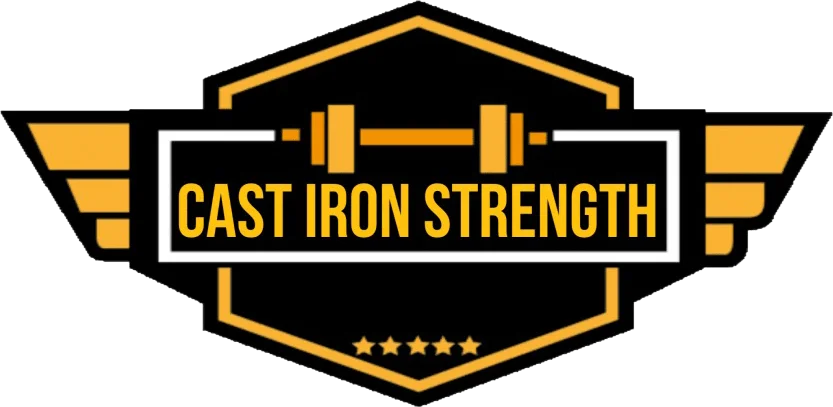One of the criticisms I made about 5/3/1 was it’s lack of programmed heavy work, on the original programme it might take you 3-4 blocks before you start to hit 2-5 RMs on the heaviest week. This is probably round about where the programme will stall as well when you would be advised to reset your training max to 90% and start again.
When your sport’s central tenant is to shift the maximal amount of weight you can through a set plane of motion then it might prove prudent to practice it as a discrete skill. Ask anyone and they will tell you that pushing out a balls out 5+ rep set is a completely different ball game then pushing out a 1RM or 2RM. The margin for error on maximal lifts in vanishingly small and therefore to get good and become efficient at your top end you need to practice at your top end.
The secret is to keep away from failing heavy work as failing a 1-3 RM set can play all sorts of mind games with lifters and can completely destroy their momentum.
So you just choose a sets x reps scheme that will put you in the percentage range your looking for – 3×3, 3×2 or 2×1 —> 2×2 etc, and step up the weeks as the programme ramps. Below is an example of how you would include the heavy work into a squat routine for a lifter with a 220kg max.
Volume work.
Volume work comes into two kinds of categories
- Lift specific volume work (any sets x reps on the lift itself or a variation)
- Assistance work (bodybuilding in essence)
Lift Specific work
When you look at this kind of volume you should try and prioratise the actual movement itself as what you are practicing is repetition effort that is specific to the lifts that your are looking to improve on. We will be using 5/3/1 as the lift specific work on the programme we are going to outlay however any myriad of approaches can be used.
When ordering your exercises always keep in mind that the lift your put first in the workout is usually the one that will progress the best as you will be fresh.
When you programme in lift specific volume work you have to realise that it is going to eat into your recovery as much if not more than your heavy work so you need to be smart about how you include it into your programming. 2-3 variations of a lift in one work out is usually a good amount it is also a wise idea to be mindful of the amount of volume you perform on each.
Examples of Lift Specific Volume Work
Bench Press – 5/3/1 Bench press, banded bench press, reverse band press, speed bench press, close grip bench press, incline bench press, paused bench etc…
Squat – 5/3/1 Squat, Box Squat, Front Squat, Banded Squat, Reverse band Squat, High bar squat, Speed squat etc…
Deadlift – 5/3/1 deadlift, Speed deadlift, Romanian deadlift, stiff legged deadlift, deadlifting from different heights, deficit deadlift, reverse band deadlift etc.
Overhead – Seated Press, push press, jerks etc.
Strong Man – strongman can be treated a little bit differently the same logic applies but you should use this principal to prioritise and events that are coming up in your next competition.
Assistance Work
Assistance work should be used to bring up important body parts and to balance out your training. I like to split my assistance work into two categories in my head.
Lift specific assistance.
These are exercises that are going to have a direct influence on your lift so for instance in the bench press for power lifting if your lift in a shirt you might want to include heavy tricep work to help and overcome the pronounced sticking point. Perhaps for your deadlift you find that you can’t keep position off the floor or that you are weak in posture for this you may want to really work on things like RDLs or clean style deadlift to help develop strength in a specific position.
General assistance/bodybuilding work
The rest of assistance work I look at as bodybuilding work and just apply a body part spit alongside your lifting routine. The variants on this are practically endless but generally include the following.
Abdominal exercises and low level body weight work.
Cable exercises
Dumbbell exercises
Machine exercises
These exercises generally take up little in the way of recovery and can be put in 2-3x a week as long as 24 hours of recovery is provided and are my preferred way of targeting important areas such as back work (scapula retraction in particular and it’s application to benching) and general abdominal work.
Putting together the programme.
For the purposes of illustration I have put together a 4 week split that follows the routine outlined in the weekly plan for powerlifting,
Our imaginary lifter has the following personal bests.
Back Squat – 190kg
Bench Press – 150kg
Deadlift (conventional) – 230kg
Strict Press – 100kg
You can find a downloadable version of the programme – here
That concludes our look at modifying the 5/3/1 template for top end strength, next we will look at modifying it for an athlete who is using weight training to complement their sports training.
Marc







